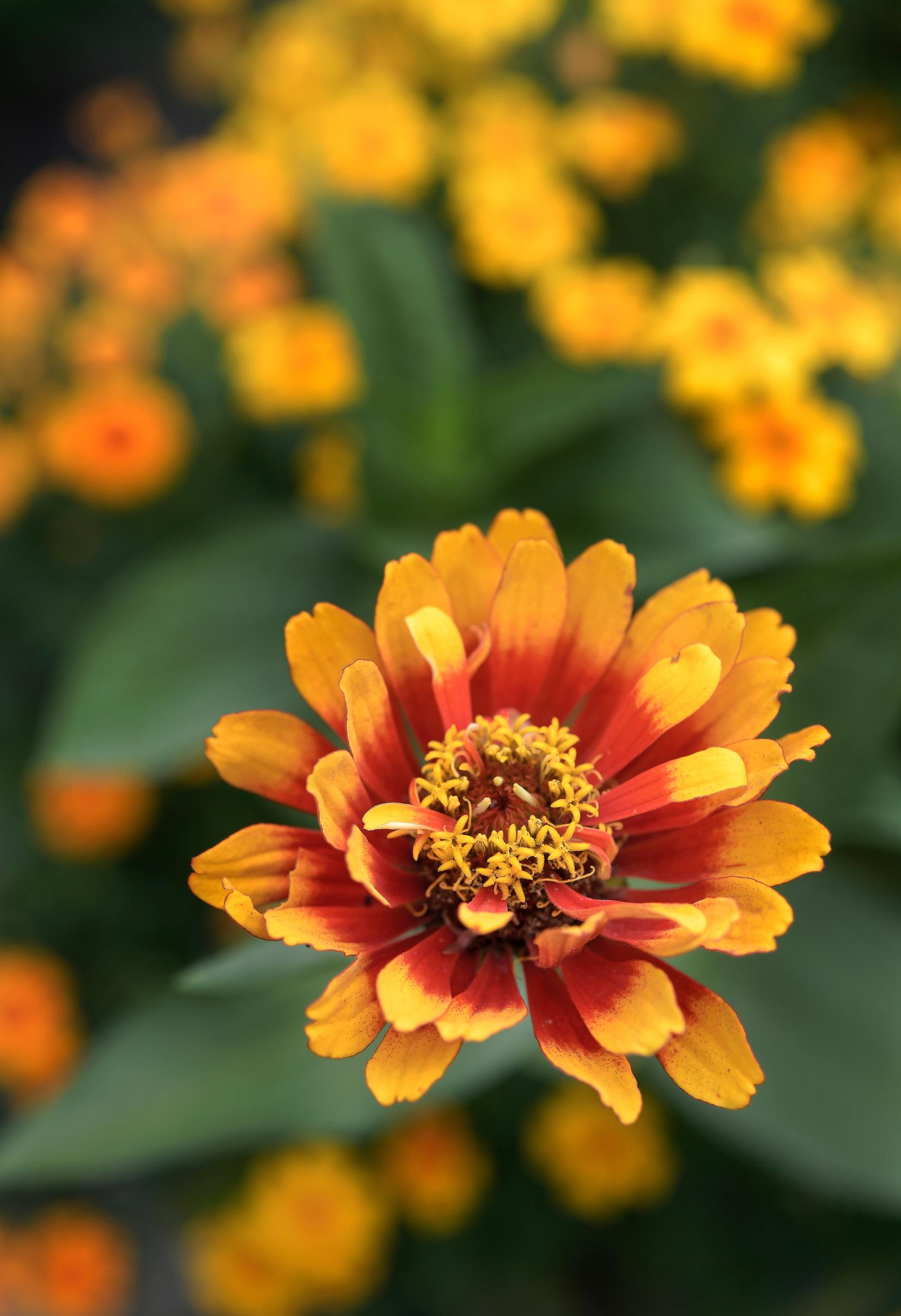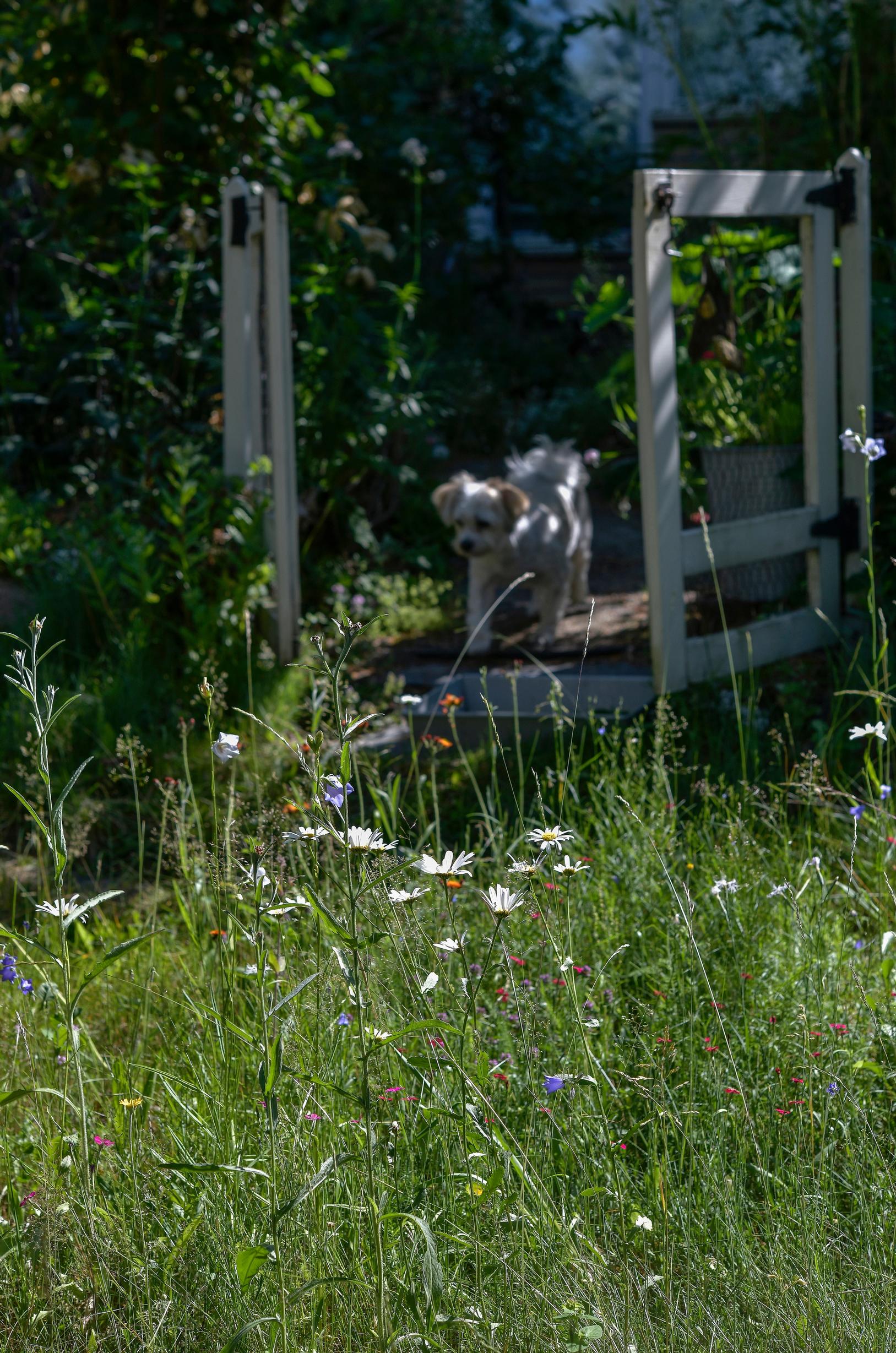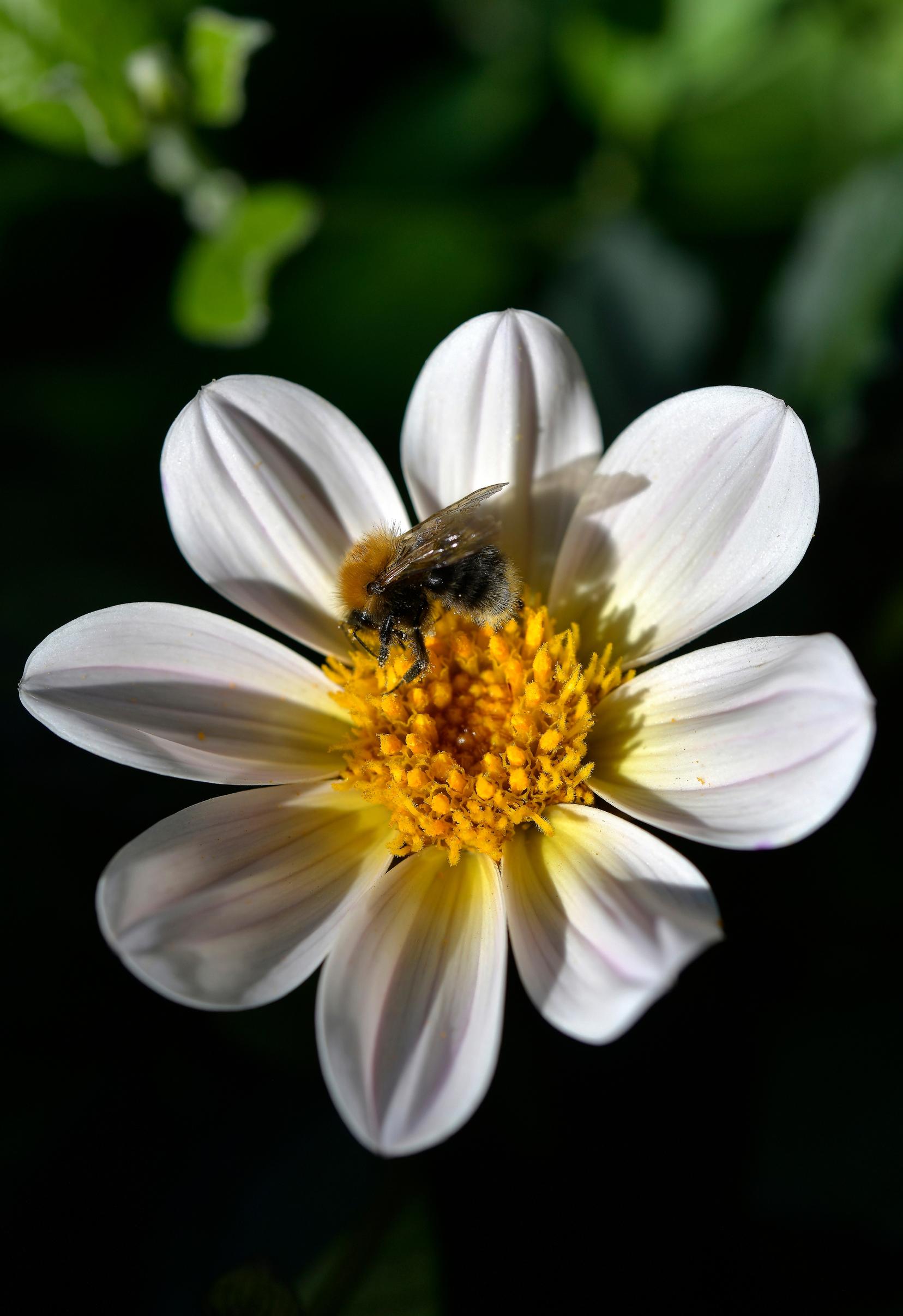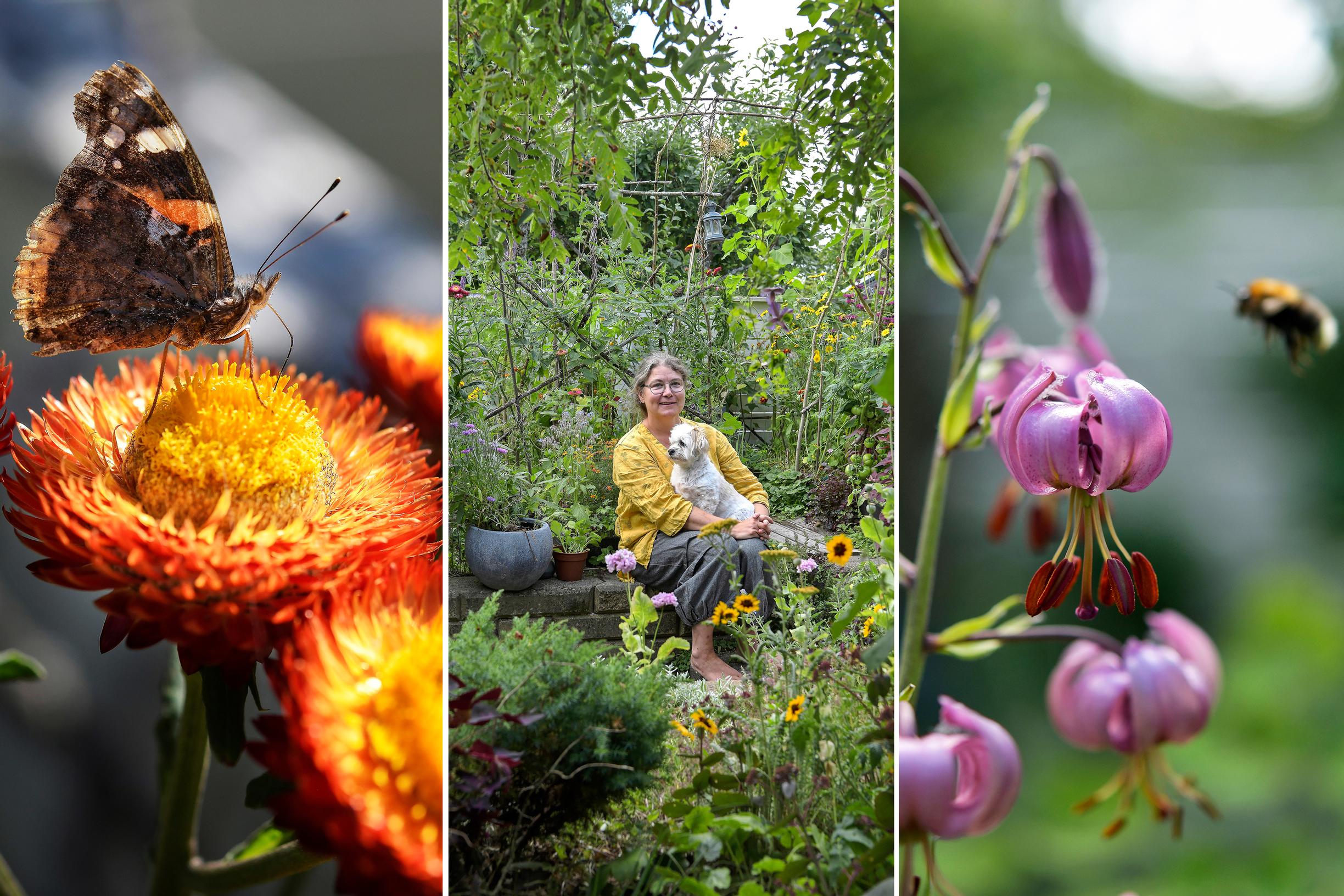
Karoliina turned her 80-square-meter garden into an oasis for insects—“Many have been amazed by how many buzzing insects there are”
For Karoliina Pertamo, it’s most important that her garden provides a habitat for insects and birds. Plant clusters bloom from spring to fall for the delight of buzzing insects: “I think of my garden as a pearl on a string.”
TA flower crab spider has found an excellent hunting spot in the center of a pink strawflower. This spider especially likes white and yellow flowers and changes its color to match. It blends perfectly into the flower’s white and yellow center.
At the beginning of the summer, the crab spider had been residing in an alpine clematis, then it moved to a blue eryngo. When the strawflowers opened their round buds, the flower spider immediately took advantage of the opportunity.
Illustrator Karoliina Pertamo is well acquainted with the life of the white flower crab spider, as she observes its activities in her garden daily.
“I noticed that the flower crab spider catches a hoverfly or another insect every other day and munches on it atop the flower. Once, the spider disappeared, but returned a couple of days later with its offspring.”
What: Karoliina’s garden in Espoo, Finland
Zone: Ib (Read about Finnish plant hardiness zones here.)
Size: front yard 40 m² + backyard 40 m²
Soil: Sand and bedrock beneath a layer of soil
Special features: Diverse and sheltered insect-friendly garden
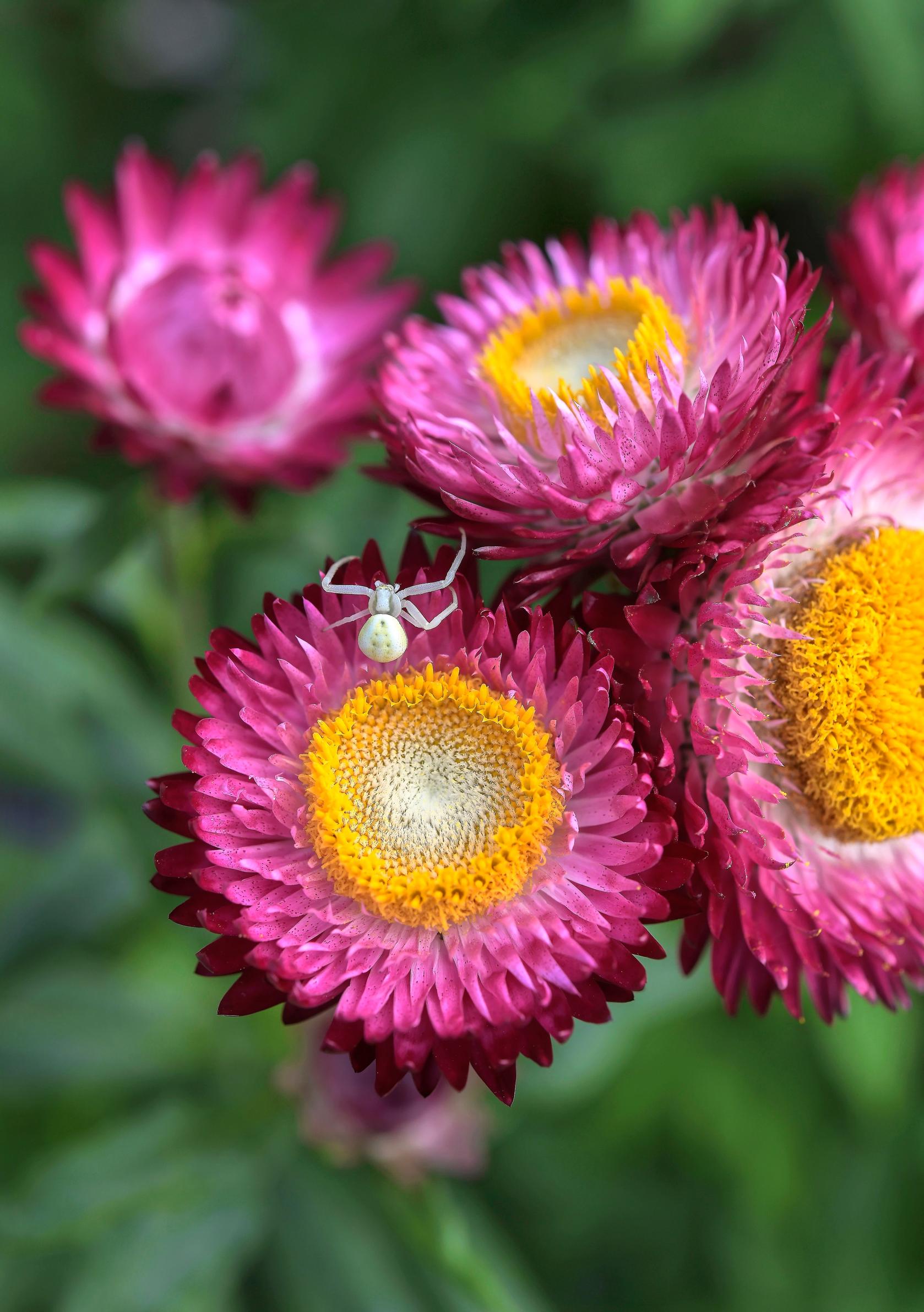
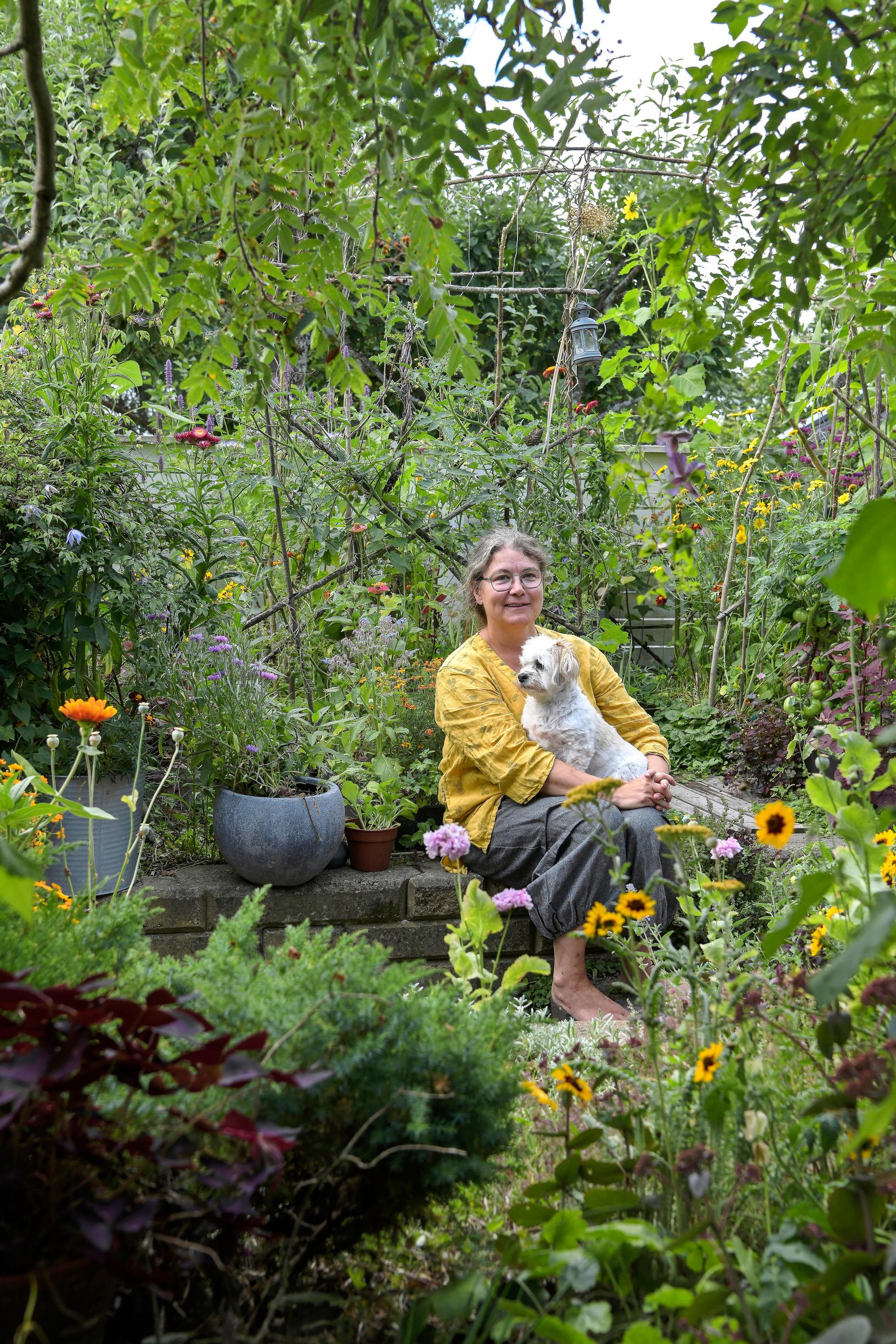
Strawflowers, tall verbenas and many other insect-attracting flowers grow in the front yard of a rowhouse in Espoo. The yard is divided into two parts by an outdoor storage shed. The sunnier side is mainly reserved for herbs, vegetables, and annual flowers, while the shadier side offers various nesting and shelter spots for insects among the plants, as well as drinking bowls for birds and insects.
The west-facing backyard has berry bushes and shade perennials, among other plants. A couple of small lizards have settled there, while the fluttering and buzzing of butterflies arrives only in the afternoon with the sun’s rays.
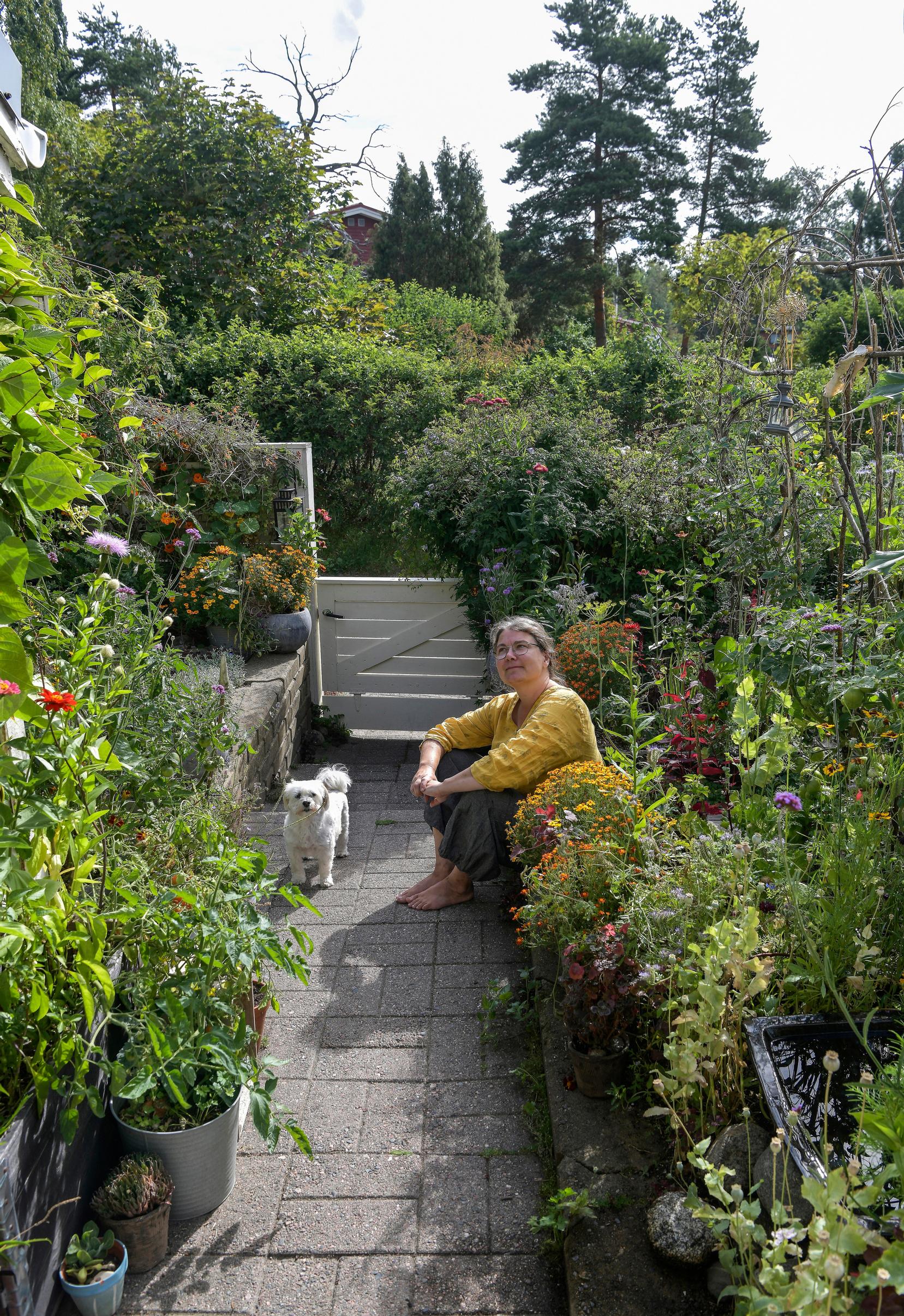
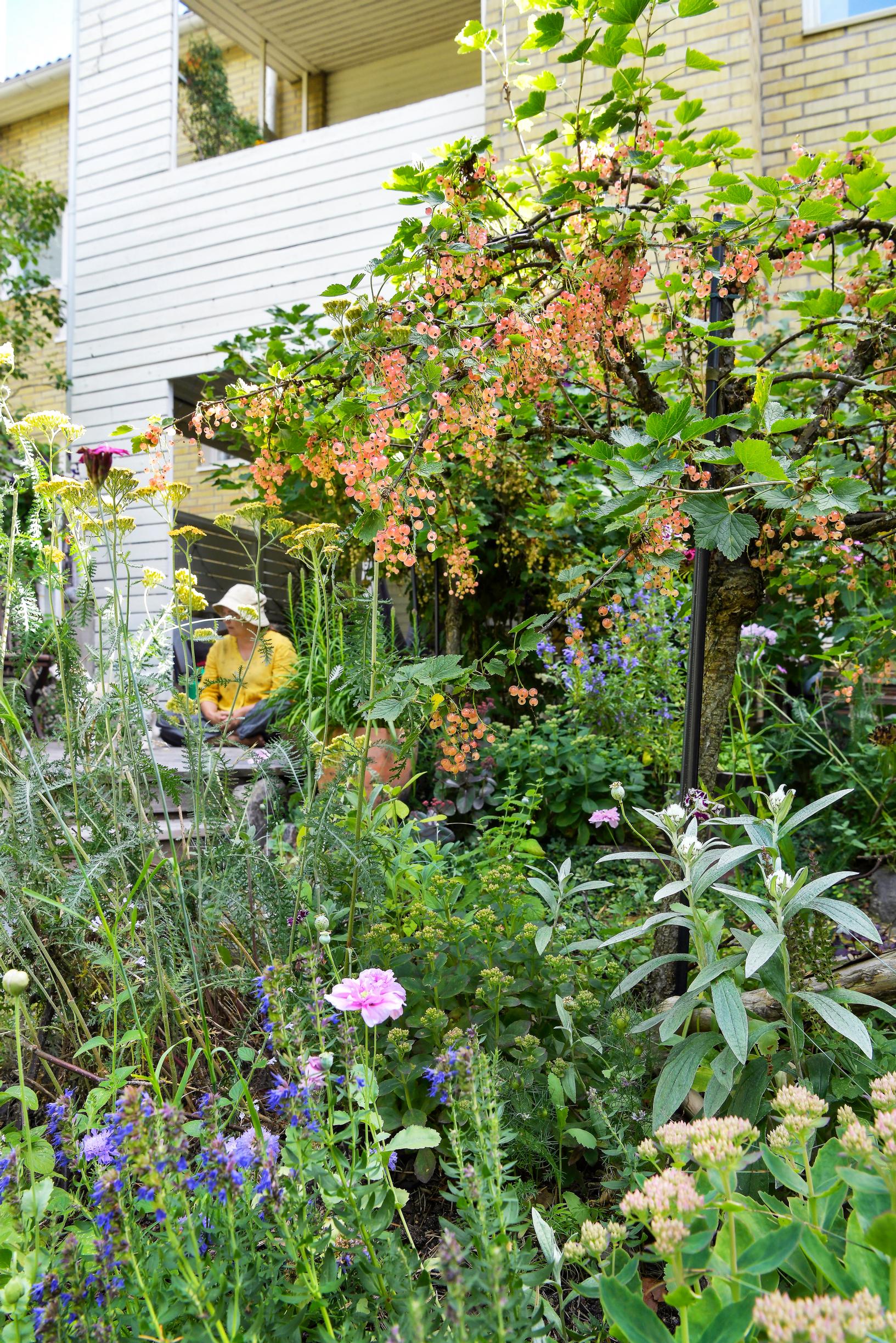
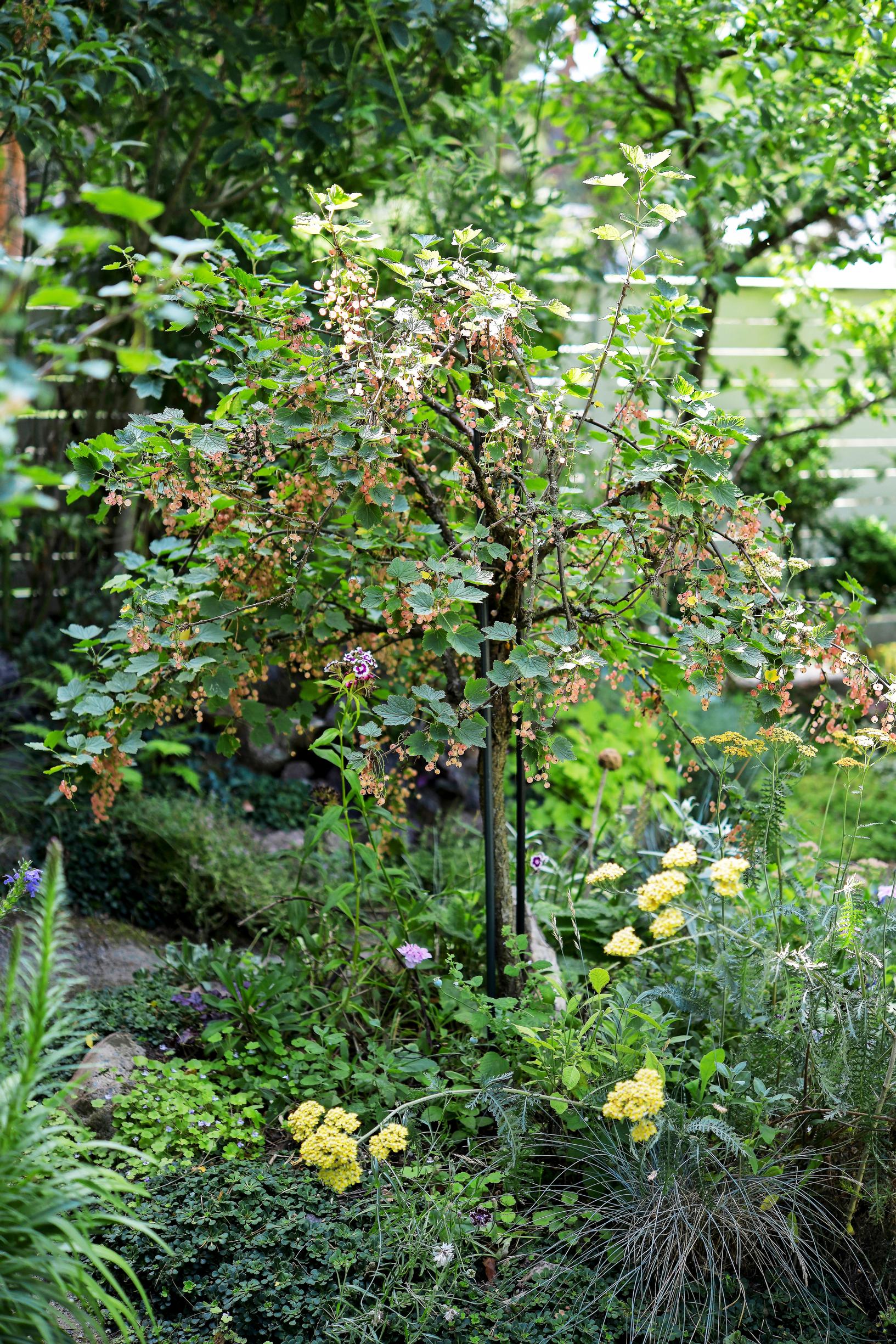
“I think of my garden as a pearl on a string”
Ten years ago, after moving into the house, Karoliina wanted to make her yard, above all, a pleasant place to spend time. She began to observe the nesting of various bees and wasps, and gradually her interest expanded to all insects. Nowadays, for Karoliina, the most important thing is that the garden provides a habitat for insects and birds.
“I think of my garden as a pearl on a string. I hope there are more oases for insects nearby so they can move around easily.”
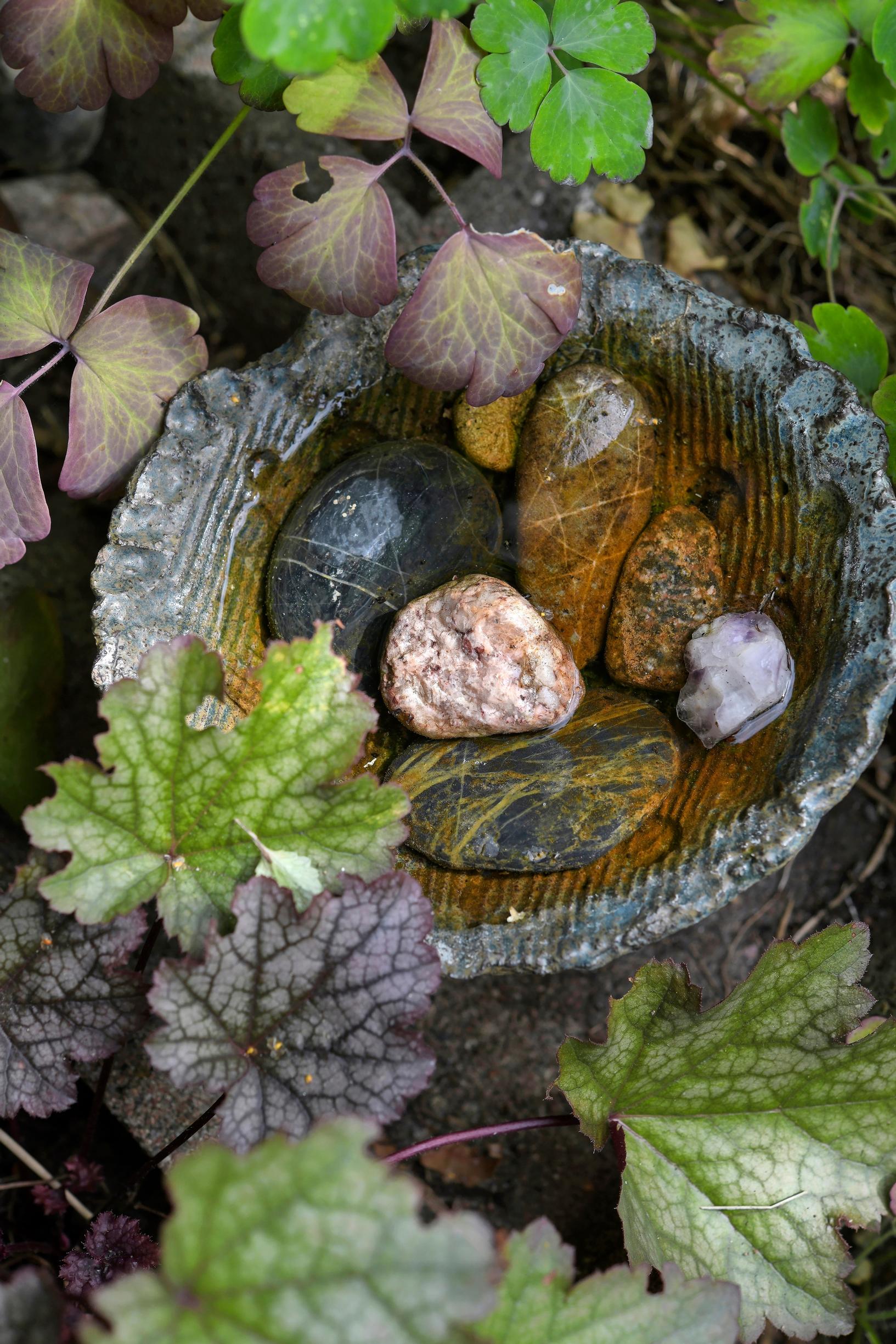
Karoliina wants to share her garden philosophy with others as well, such as passersby who marvel at the blooming maiden pinks and catmints outside the fence. She believes it's important to show that even a small rowhouse yard can be diverse and lush.
“Many have been amazed by how many buzzing insects there are here when they are missing from the surroundings otherwise. I myself always find it just as amazing.”
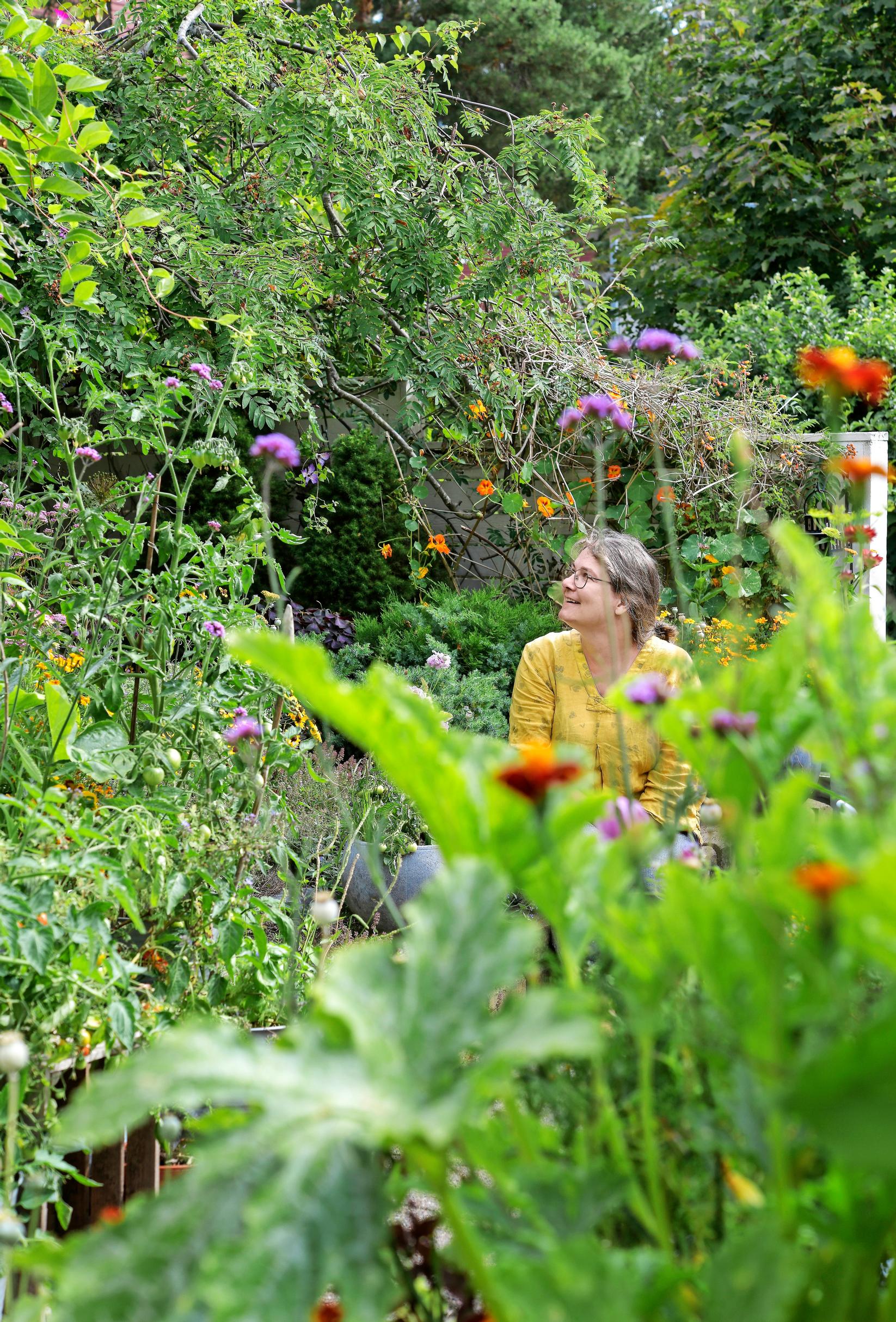
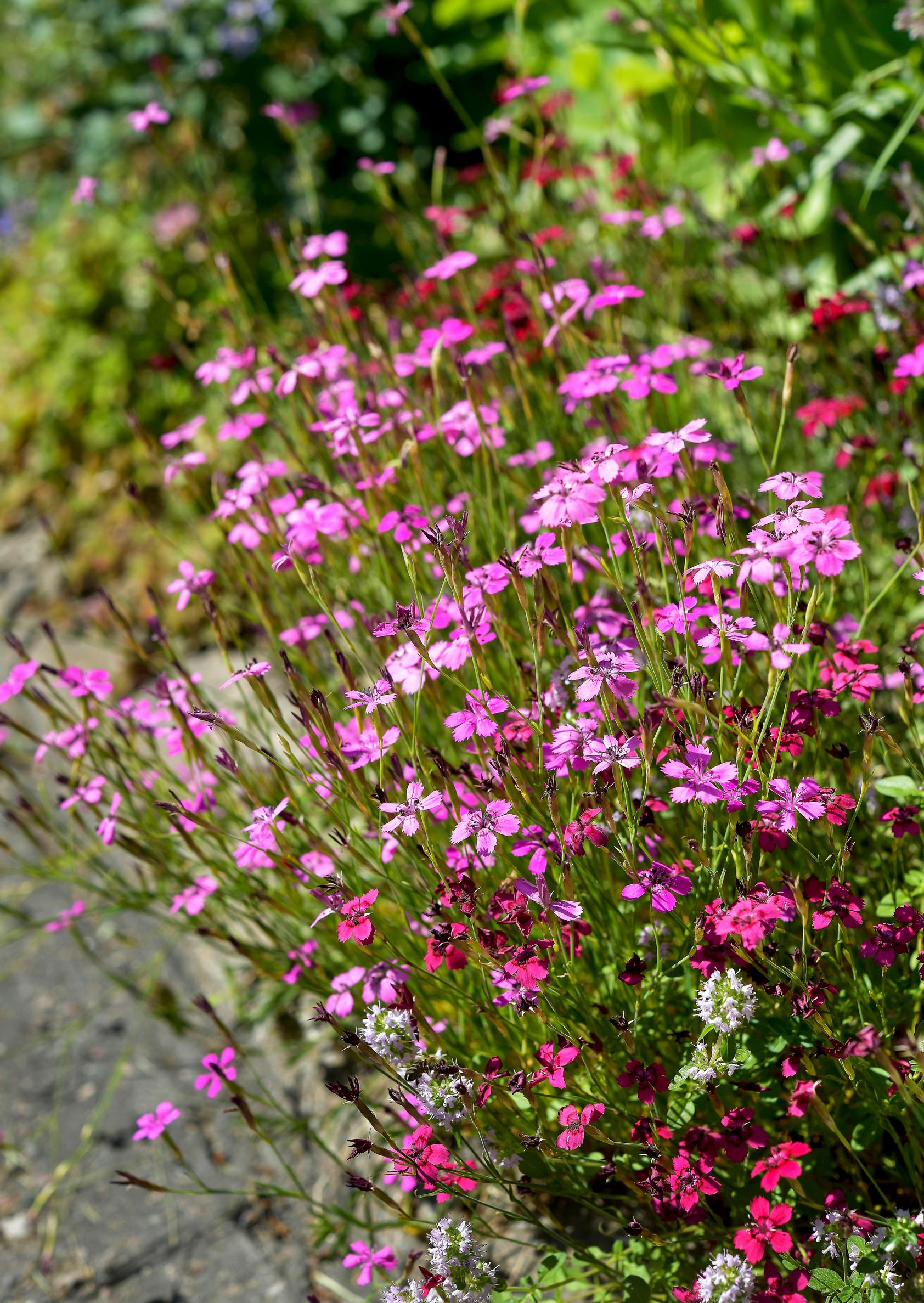
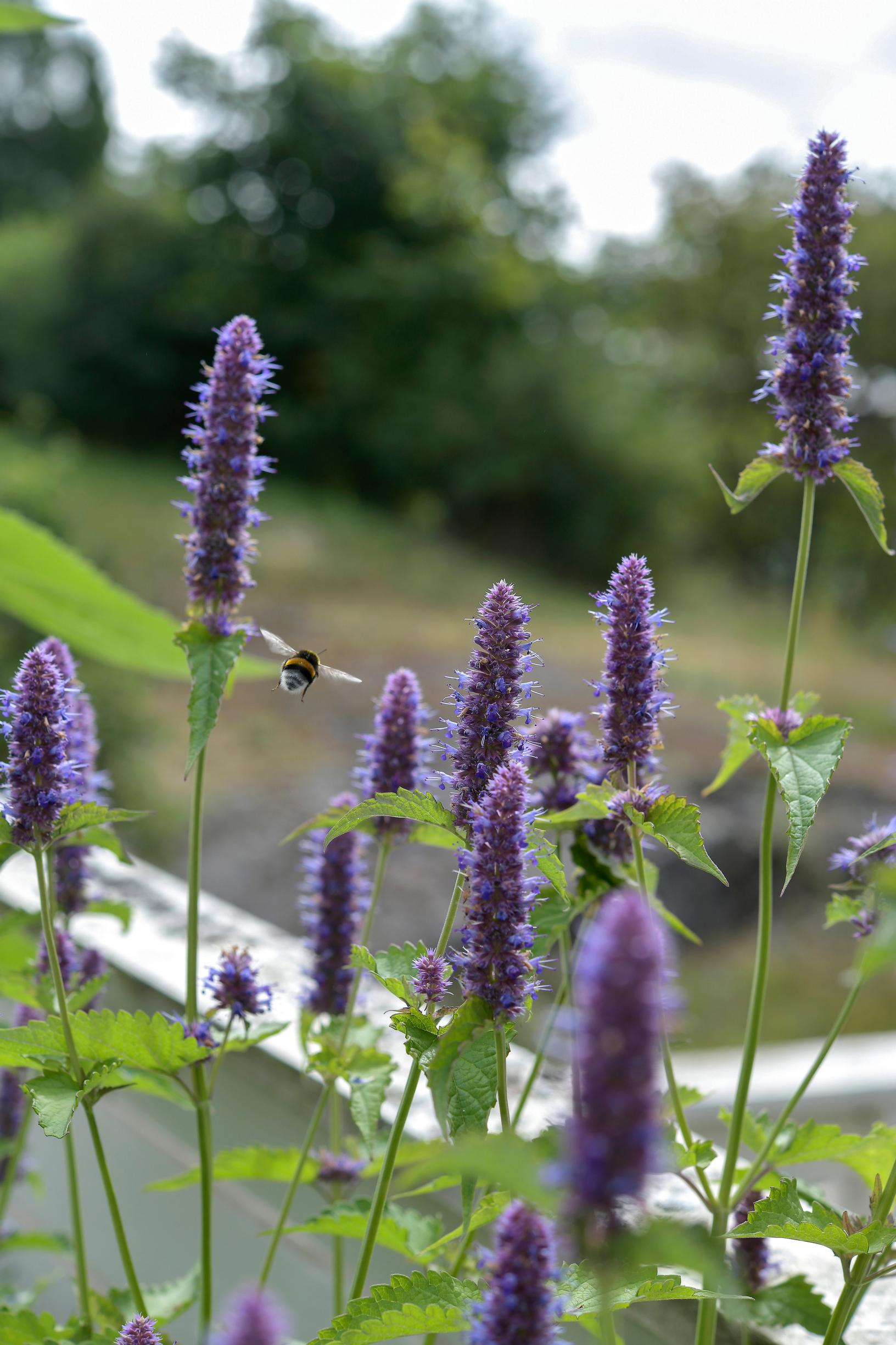
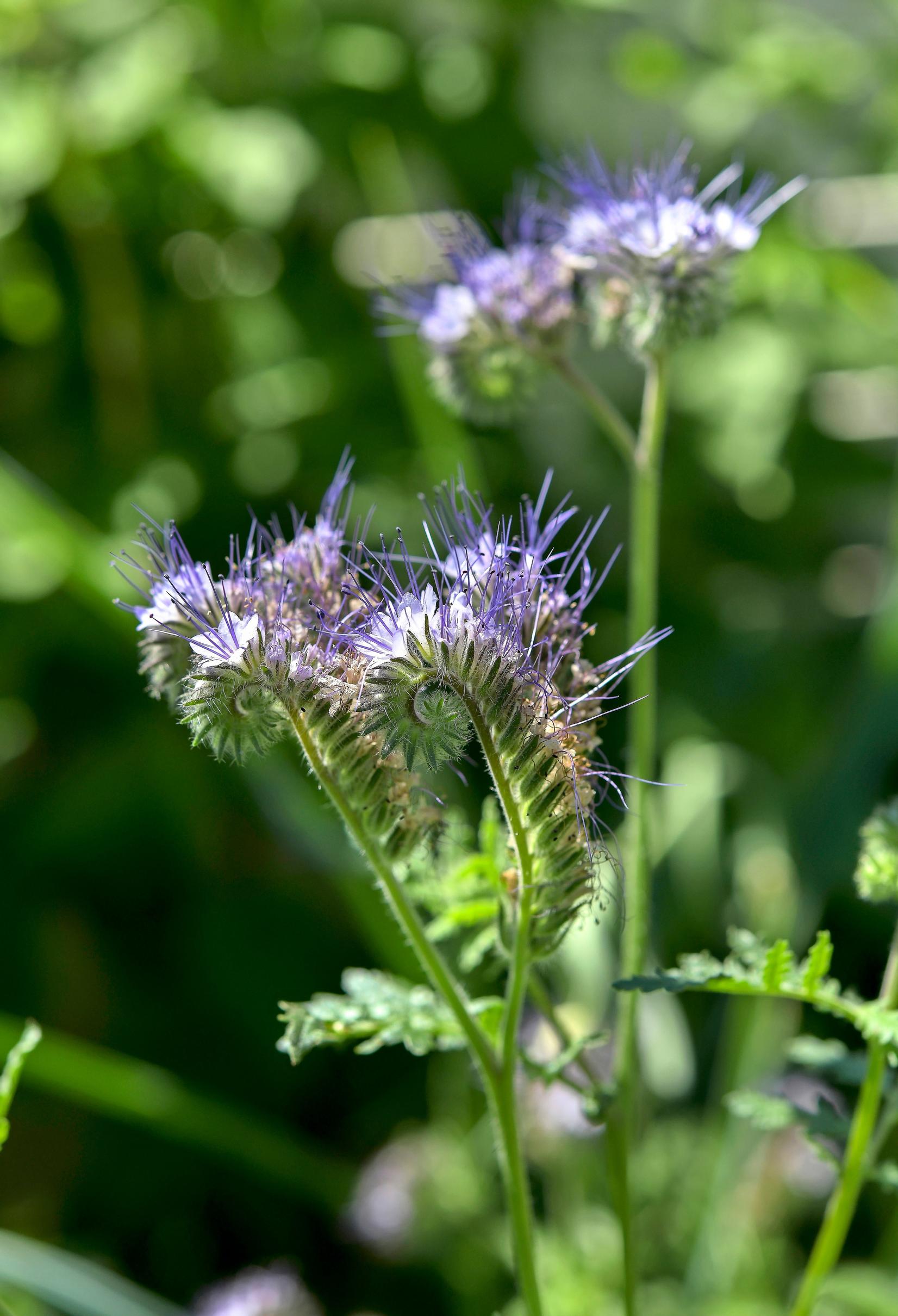
Showy bloomers are important to Karoliina only when they benefit insects. Delight to the human eye is not reason enough for her to acquire a new plant.
“There is such a large selection of plants available, so why wouldn’t I plant only species that benefit insects? Plant choices have a huge impact,” Karoliina explains.
One of Karoliina’s favorite plants is catmint, especially the tall-growing variety ‘Six Hills Giant’, which blooms from June until late summer. A male wool carder bee buzzes around the pale lilac, sprawling blooms, fiercely guarding his territory.
“The wool carder bee takes fluff from lamb’s ear and other plants for nesting material and makes a nest in a hole in a fence or wall.”
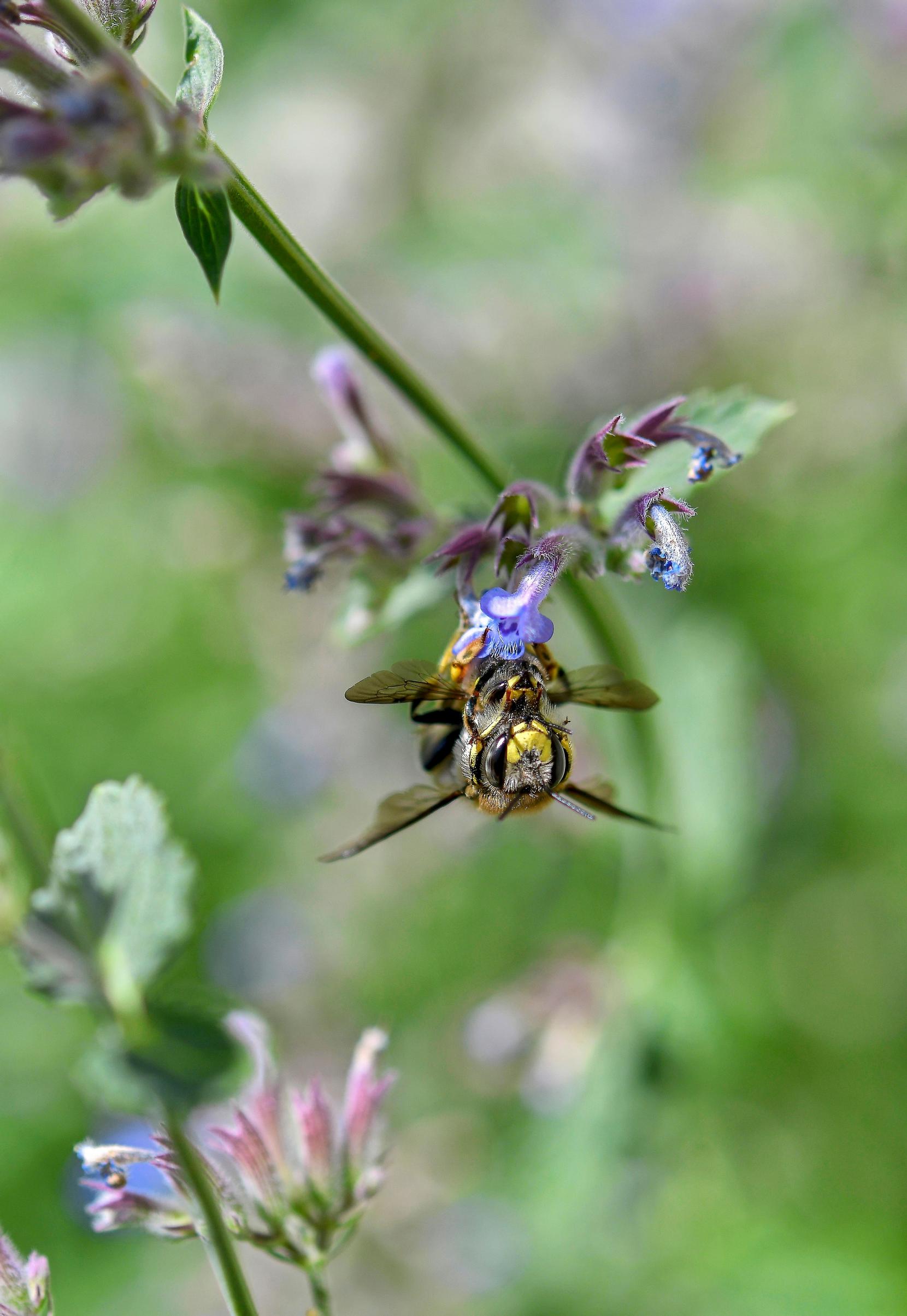
Perennials and herbs favored by buzzing insects include the lesser calamint, purple bergamot, wild bergamot, globe thistle, and blue eryngo, as well as the thymes creeping along the paths and over rocks. Among annuals, Karoliina praises strawflowers, tall verbenas, American basketflowers, and phacelia as good butterfly plants. She grows marigolds in her garden every summer to attract butterflies and bumblebees. Another favorite is the abundantly blooming zinnia, which produces plenty of pollen.
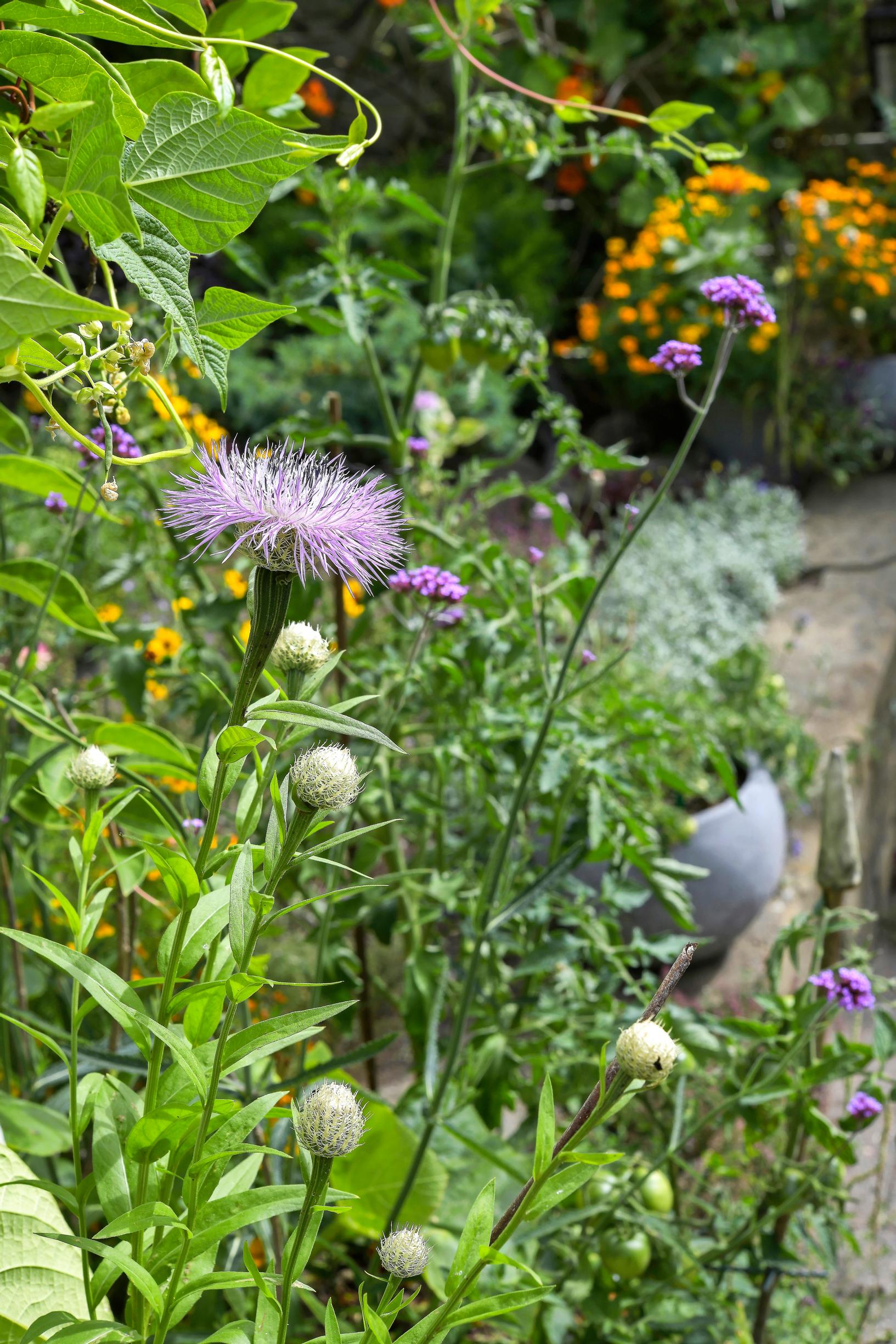
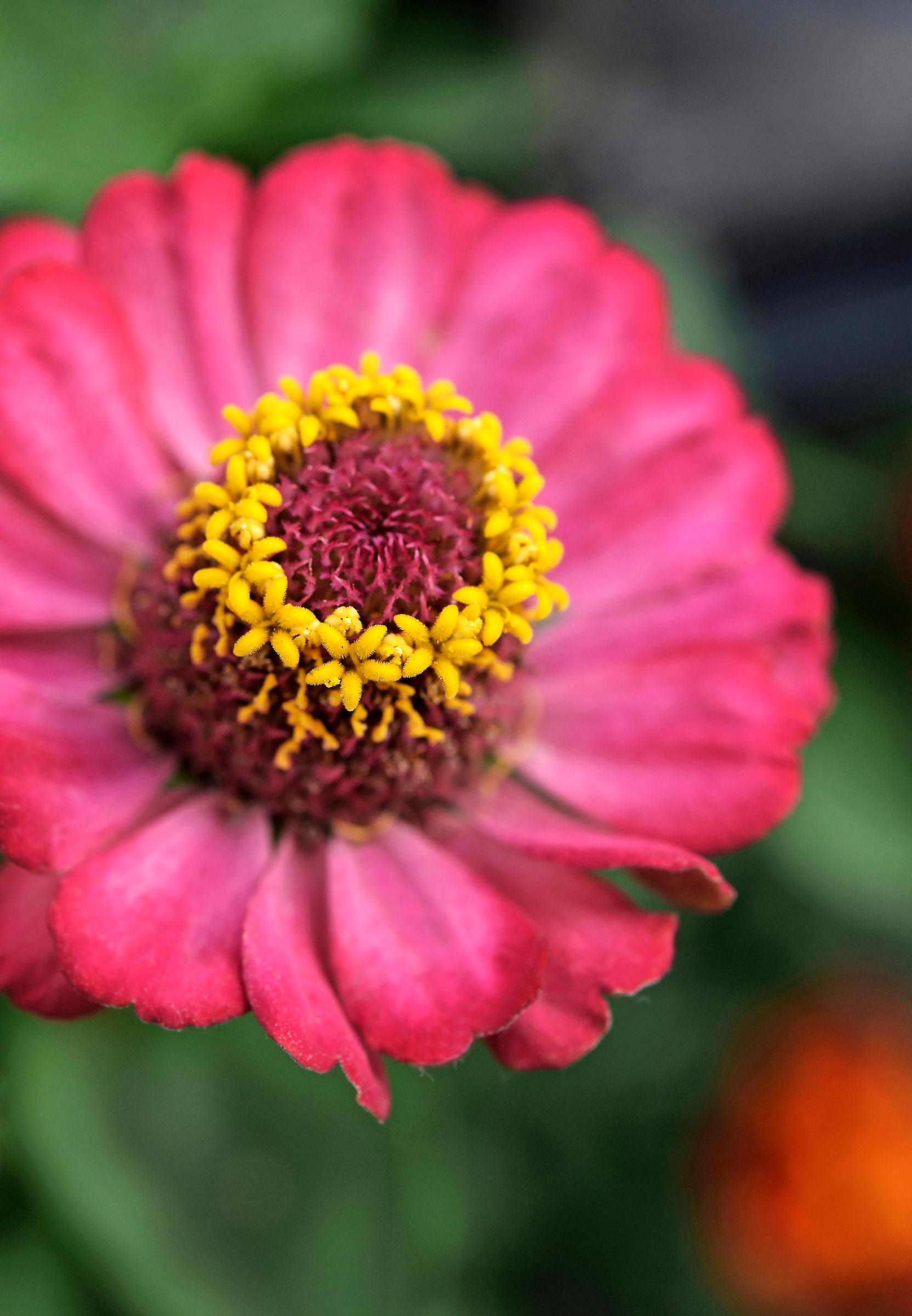
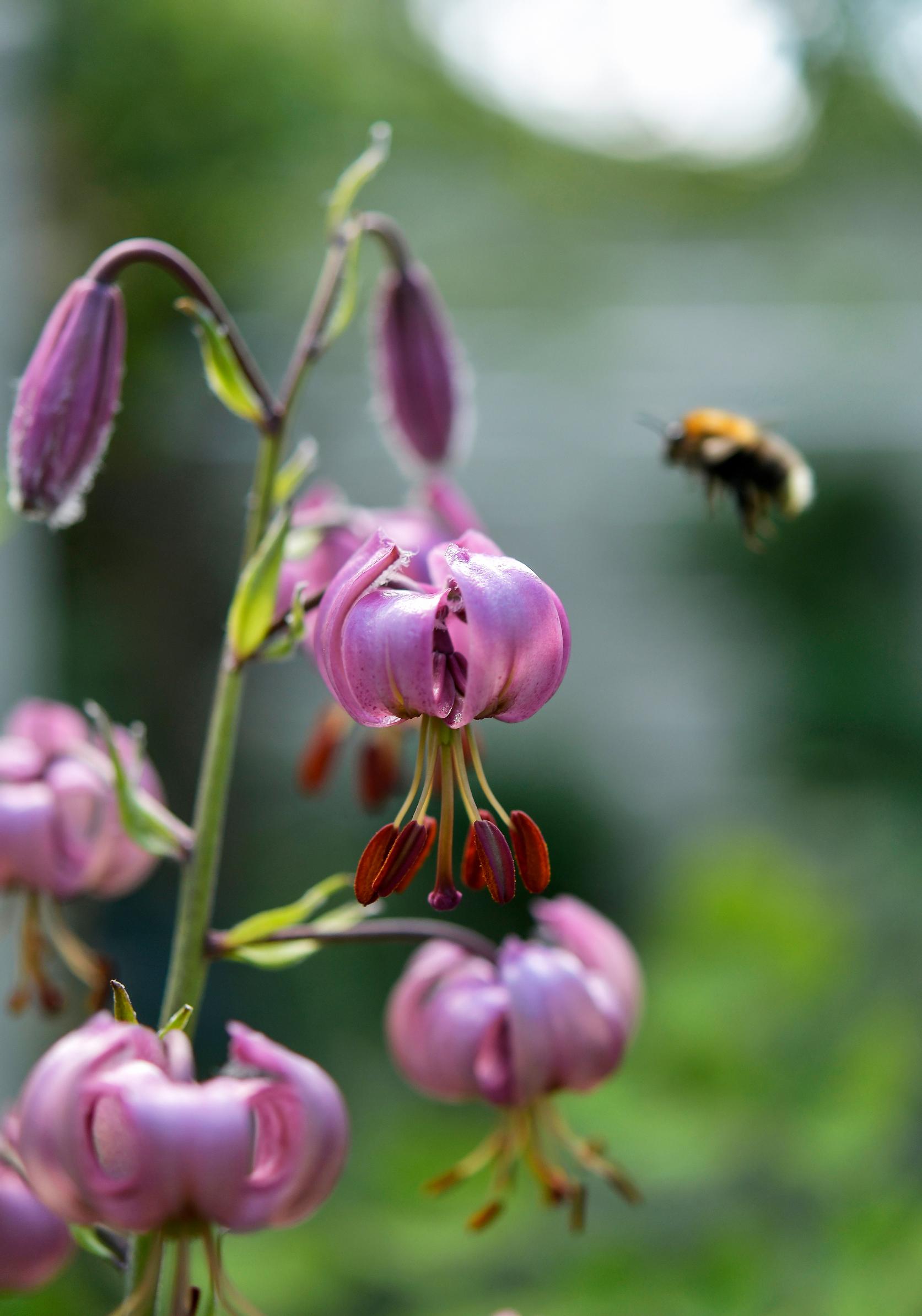
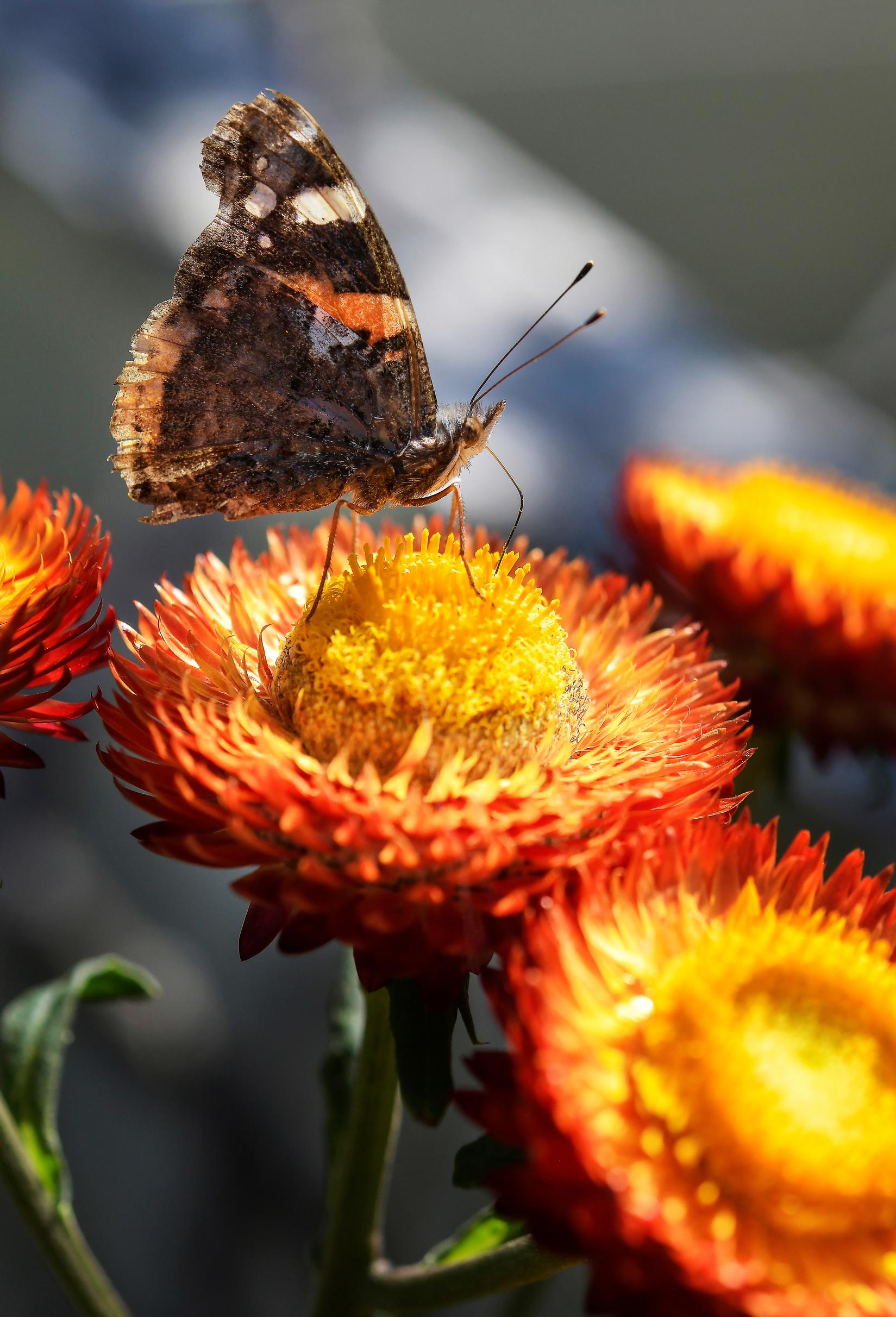
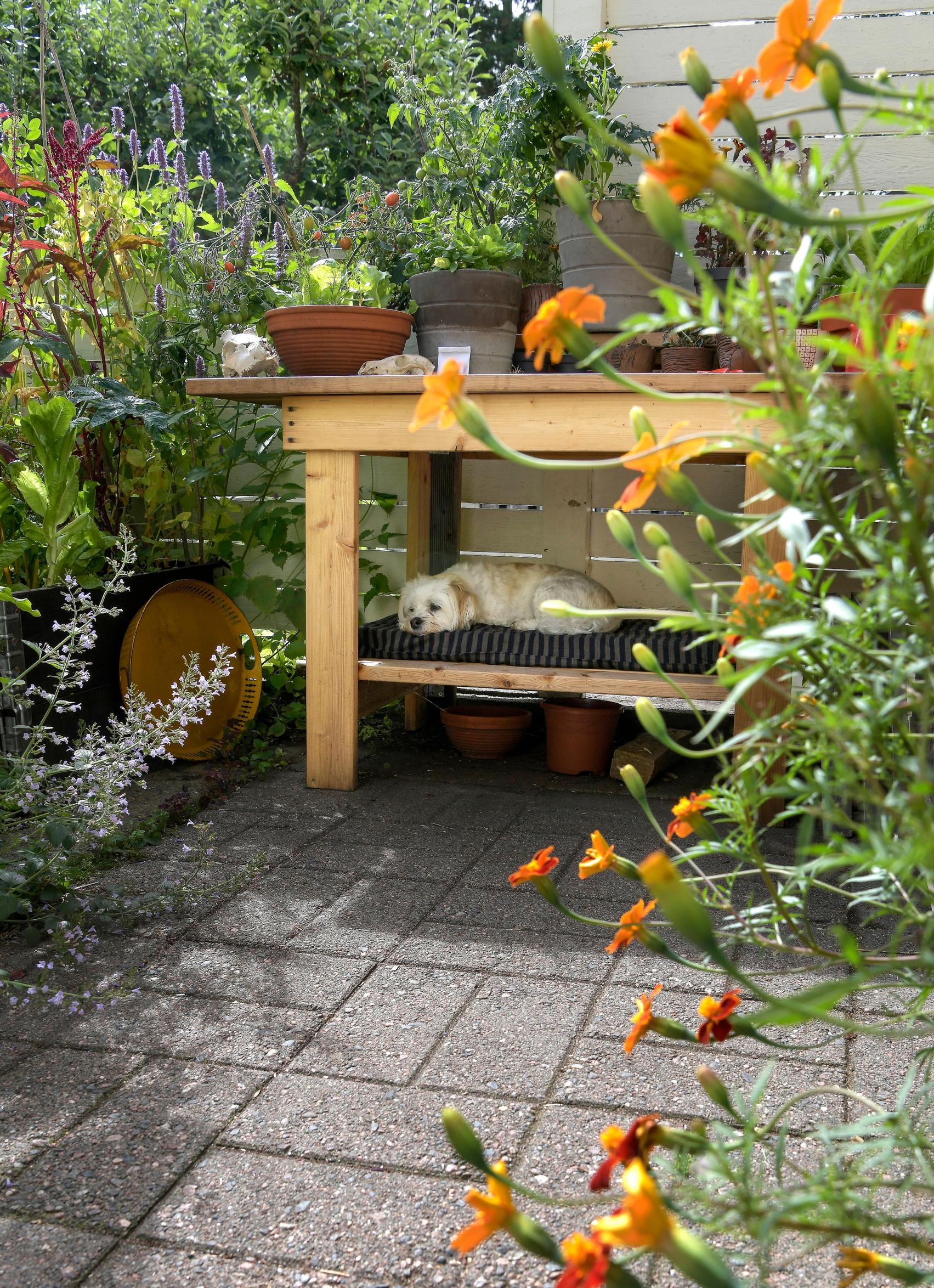
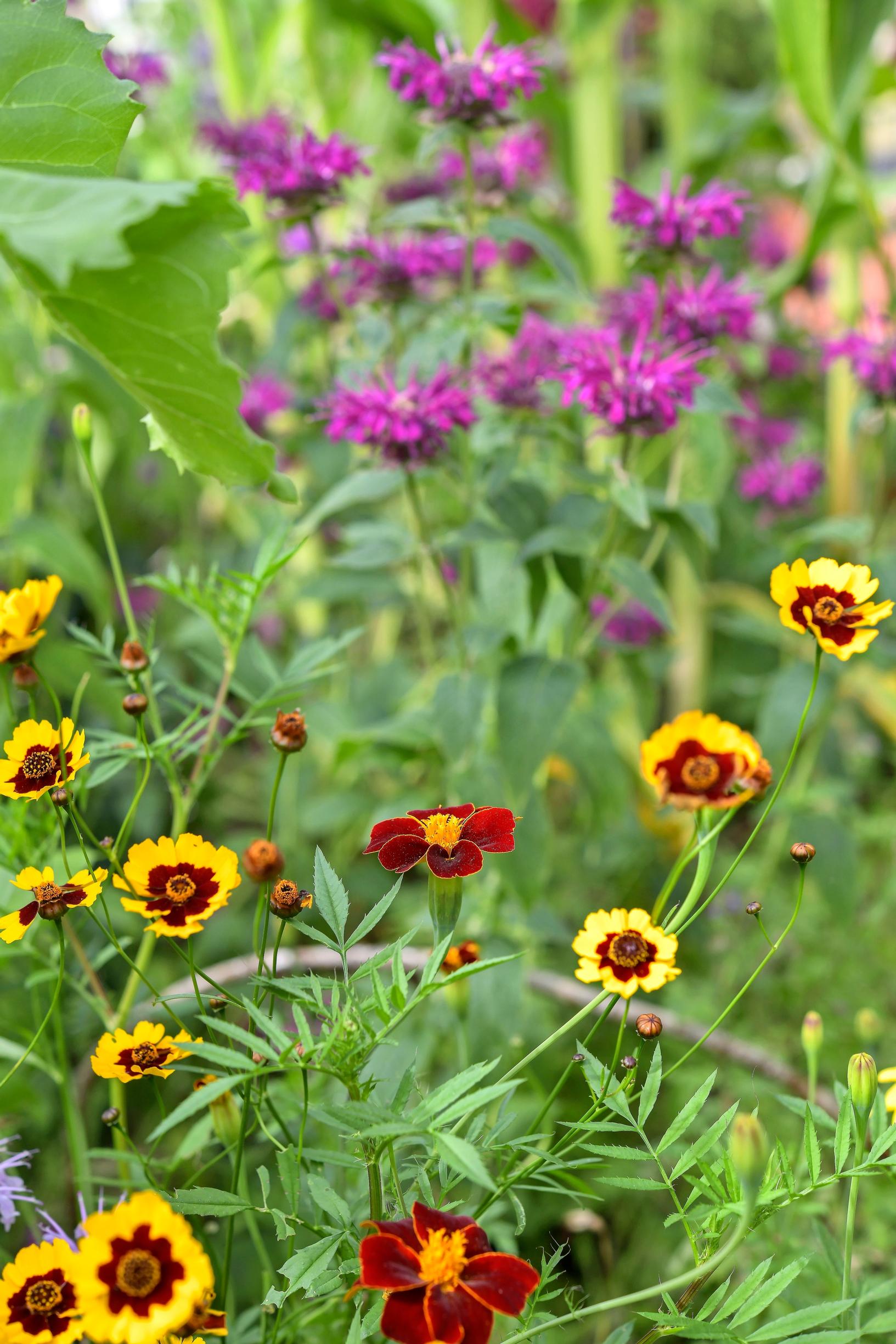
The insect garden has been put together with little effort, according to Karoliina, and its maintenance feels very easy as well. The layered vegetation with ground cover plants thrives without watering; only the potted plants and raised beds need water during dry spells.
“The garden feels like its own ecosystem and a bubble where I feel welcome,” Karoliina says.
As if to prove her point, a dragonfly whizzes onto Karoliina’s hair, before continuing its journey to the light green lettuce leaves.
“It’s easy to accept wild, rampantly growing vegetation, when you see how beneficial it is.”
Observing insects and birds has taught Karoliina to look at her own garden with gentle eyes and to appreciate imperfection.
“It’s easy to accept wild, rampantly growing vegetation, when you see how beneficial it is.”
In a diverse garden, damage by insects is minimal and usually takes care of itself naturally.
“The ‘Black Lace’ elder always gets aphids in early summer, followed soon by their natural enemies. If you want ladybugs and hoverflies in your garden, there needs to be food for them.”
Karoliina has noticed the number of insects increasing every year. Every summer feels like an adventure, bringing something new to marvel at and examine.
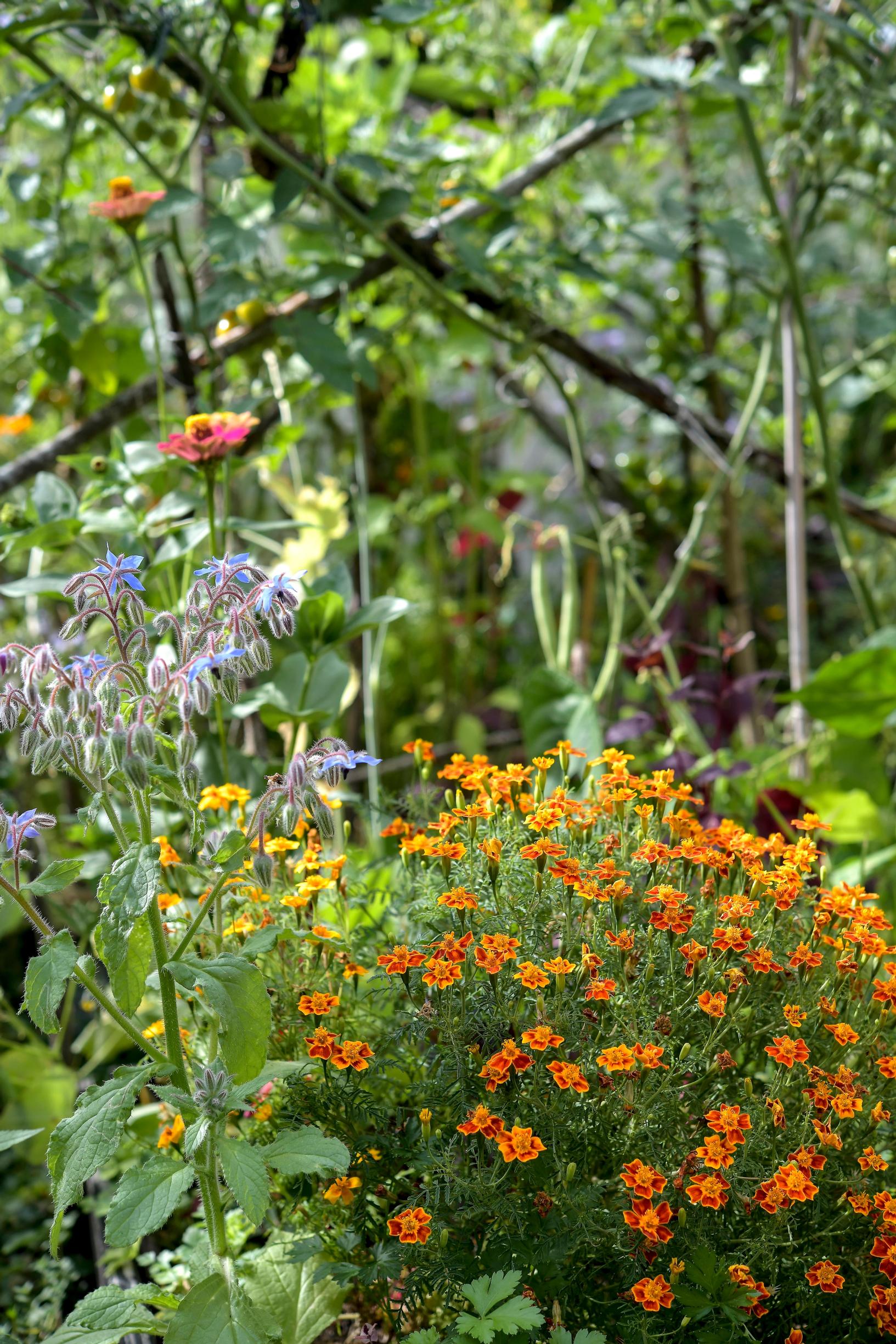
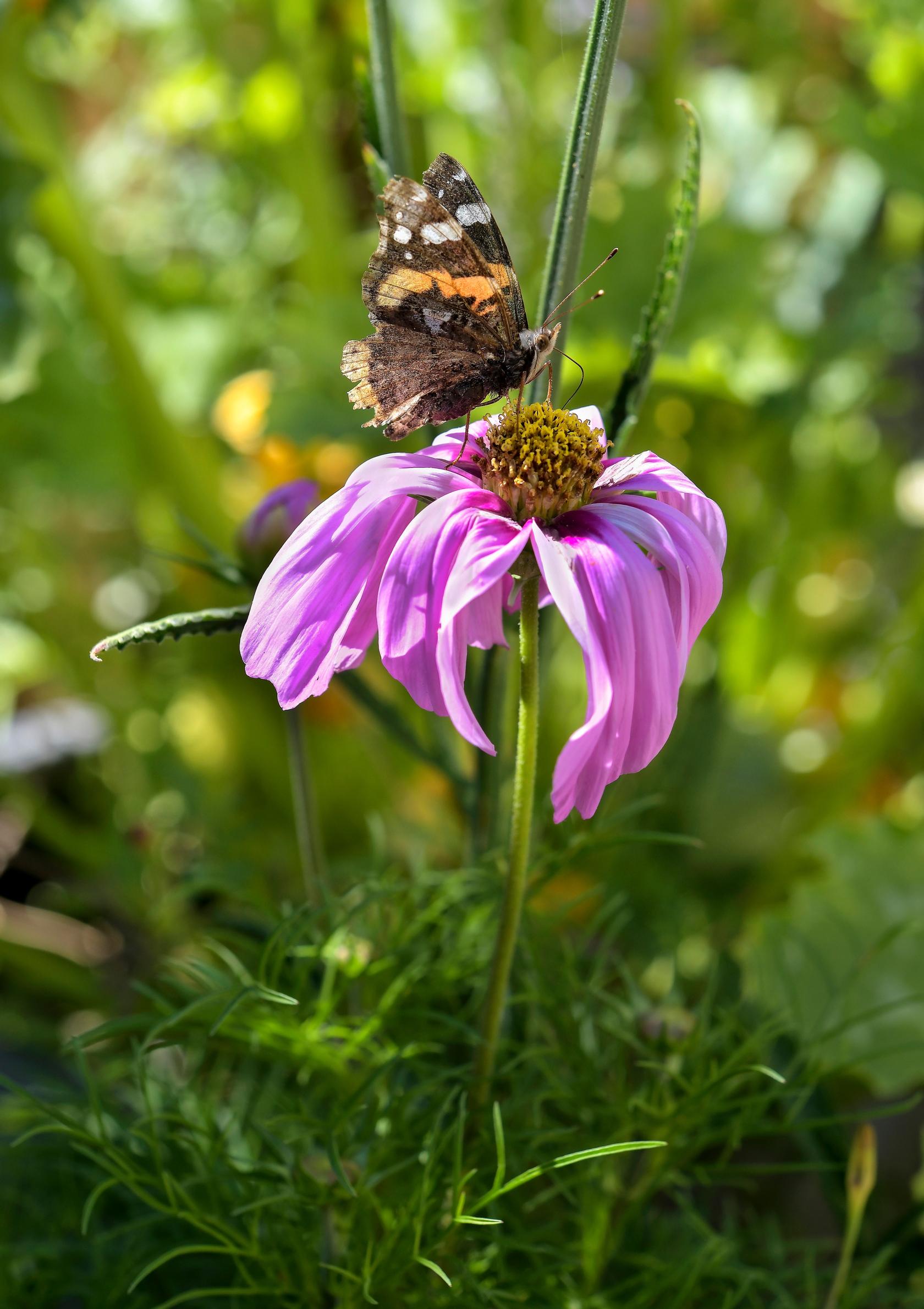
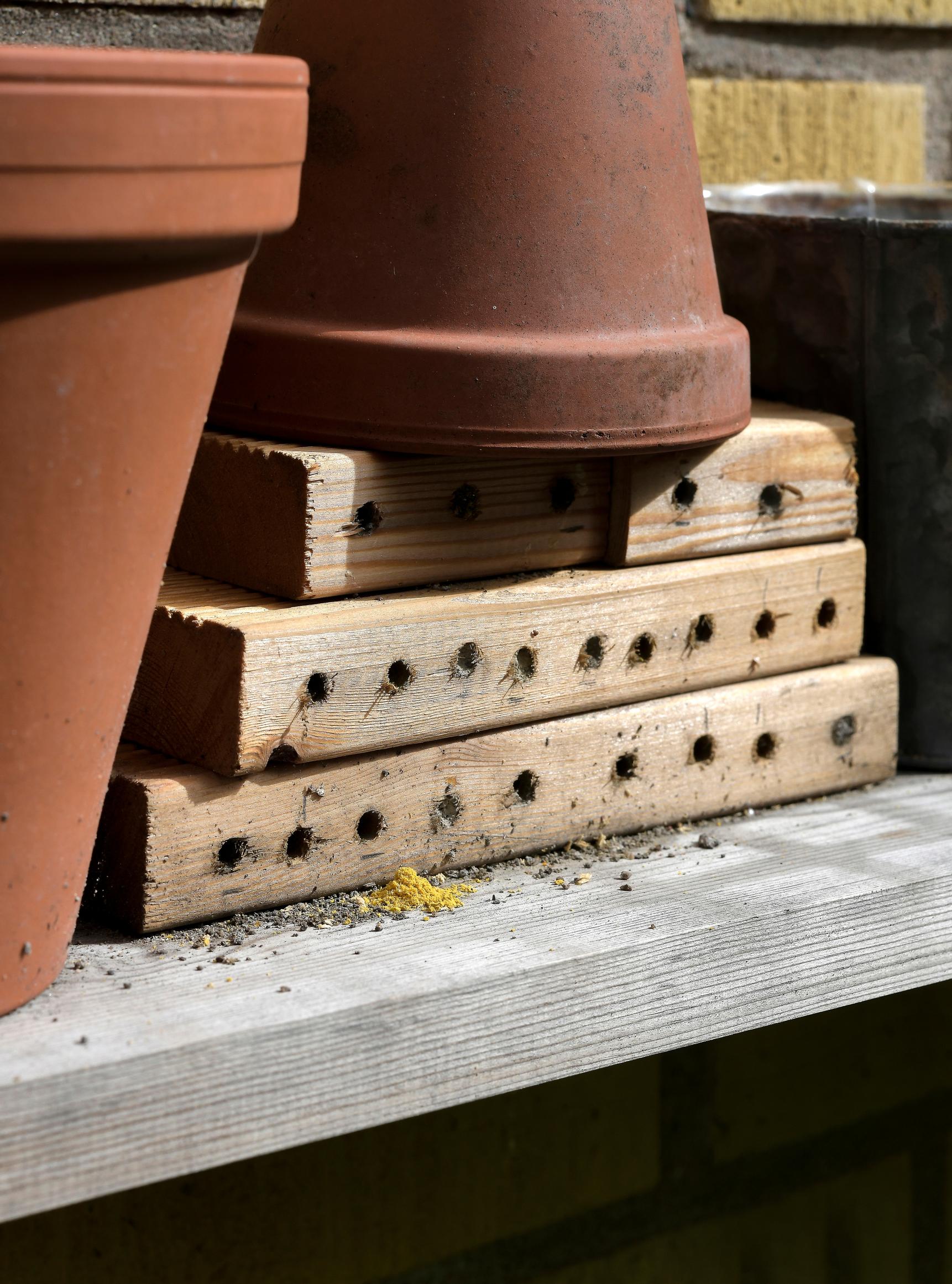
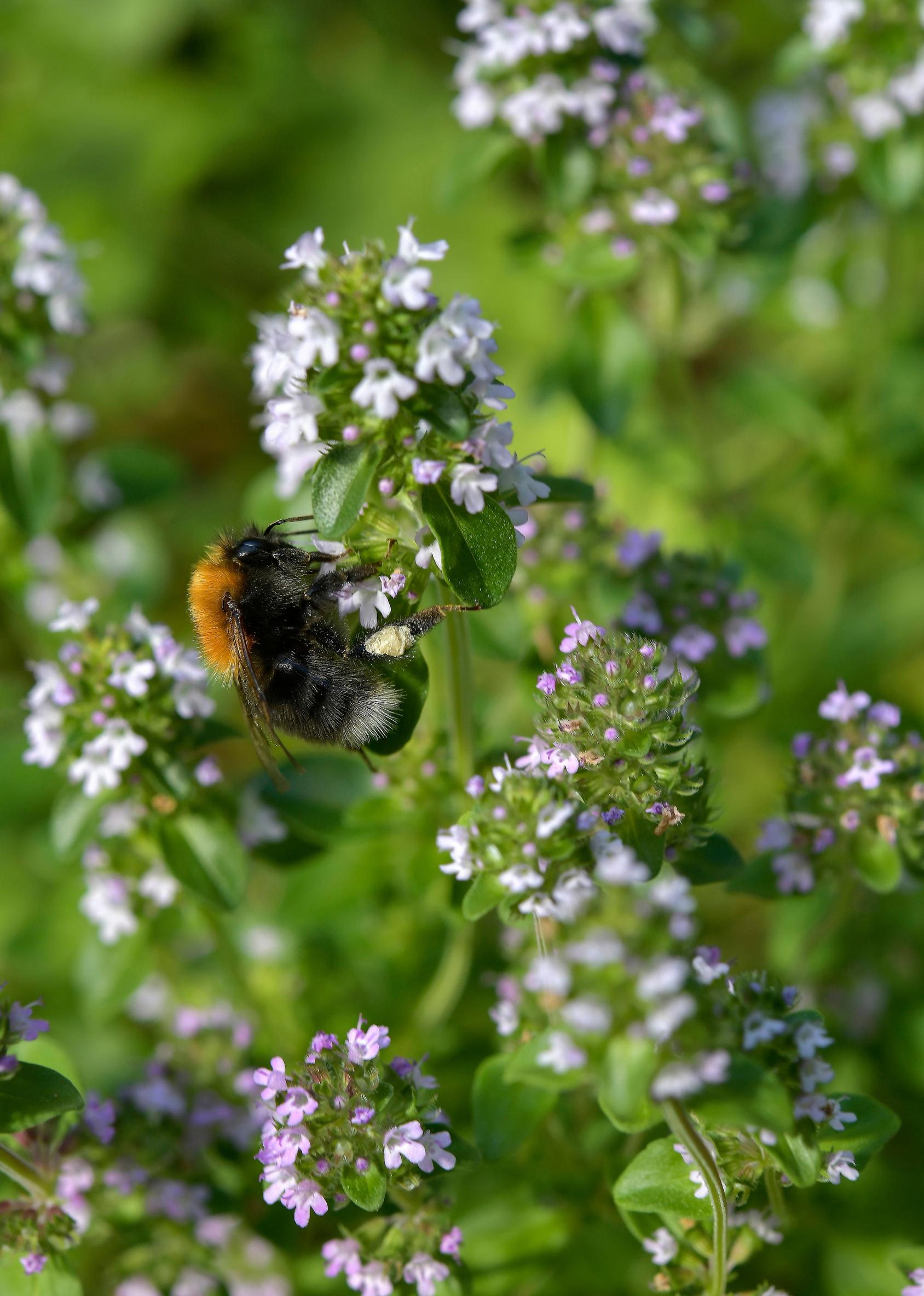
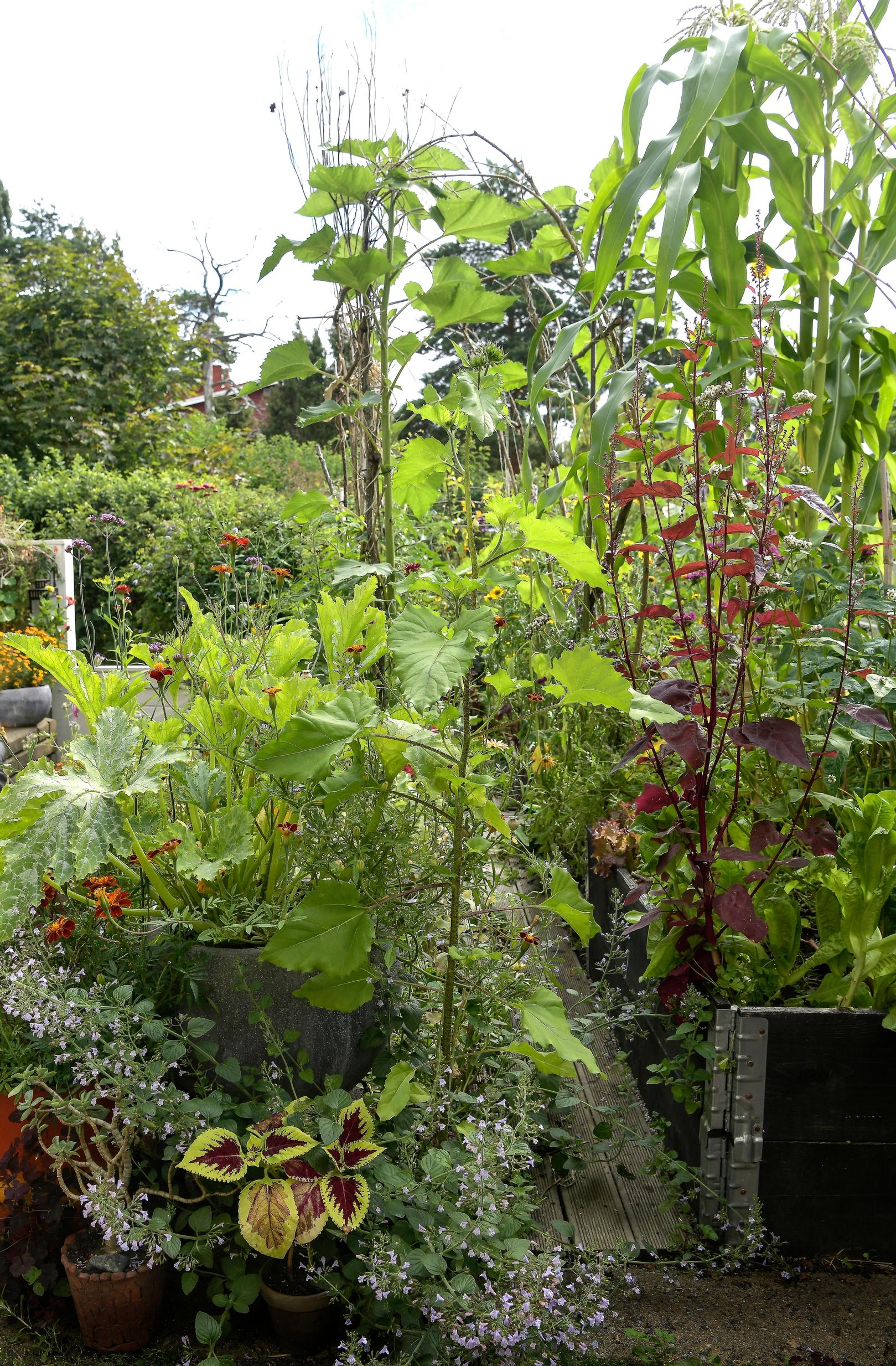
Karoliina’s plant tips for a small insect-friendly garden
1. Extend the bloom time
Choose plants that produce nectar and pollen so blooming continues from spring to fall. Even small-flowered species like coral-bells can have tiny insects buzzing around their blooms.
2. Remember native species
Include wildflowers in your garden. Beautiful bloomers include maiden pink, wood cranesbill, and bird's-foot trefoil.
3. Expand the territory
It's hard to fit host plants for butterfly caterpillars, like nettles and fireweed, into a tiny garden. You might find a suitable spot for them in the shared yard of your housing cooperative.
4. Create lushness
Grow tall plants and dense climbers. Let common knotgrass spread on the lawn; its seeds are favored by birds.
